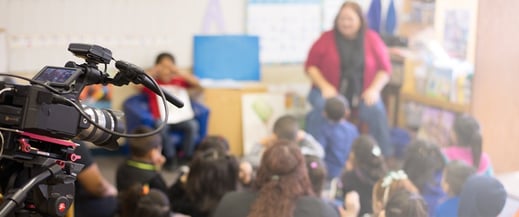
So many demands. So little time.
Classrooms are complex. To say the least.
One child arrives late, another needs to clean up after a painting, and some children are having a dispute in the block area—all while a teacher is trying to get a small group engaged in a letter-learning activity.
It’s just not possible for that teacher to give equal focus and attention to every demand in every given moment. So what’s a teacher to do?
Identify the moments that matter with video
Part of becoming an expert teacher is to break through the complexity and learn how to focus attention on the truly important demands, and to make the most of those moments. Teachers can gain the insights they need to focus on what matters in different ways (online courses, trainings, peer learning), but there’s something uniquely powerful about seeing effective teaching moments as they occur. And that’s where videos come in.
Research has shown that by watching videos of other teachers in action, teachers can make real, lasting changes in their own practice. The more time teachers spent watching videos of exemplary teaching moments, the more their own classroom interactions improved.
The role of classroom videos in professional development
Given how helpful classroom footage is for teachers, we recommend that professional development programs include the use of video to focus teachers’ professional lens. Video can be used as a self study tool, as an example during a conference, or as the basis for discussion between colleagues. That’s why we put so much effort into maintaining our ever-growing CLASS Video Library and why video is at the heart of myTeachstone, Teachstone’s new online subscription service.

